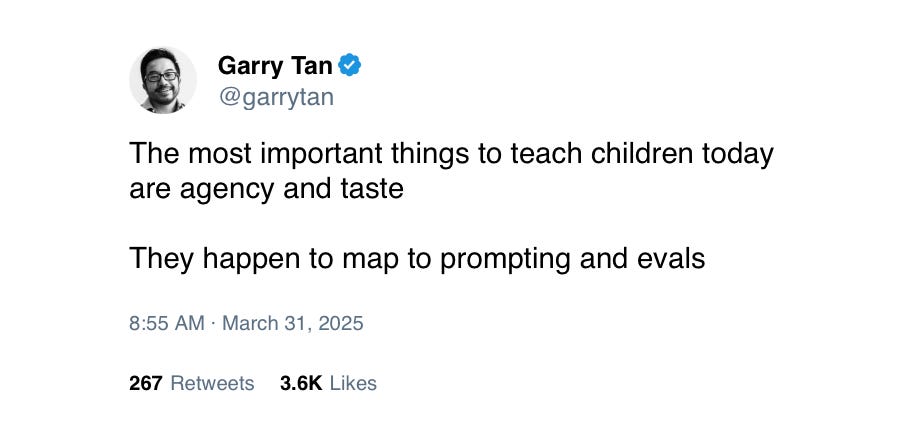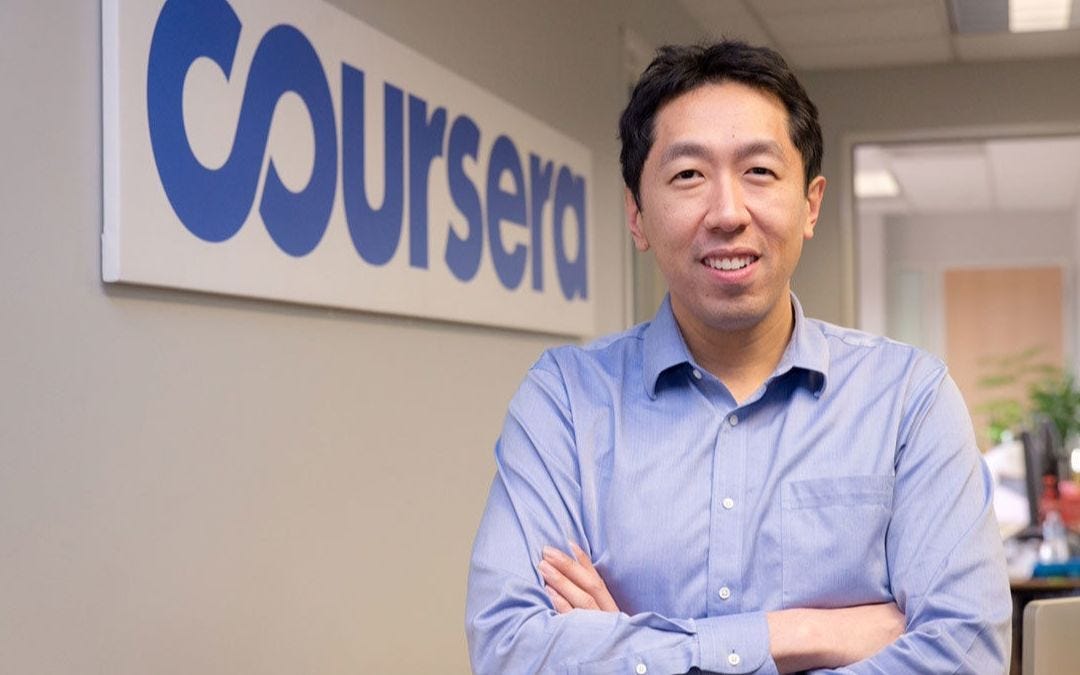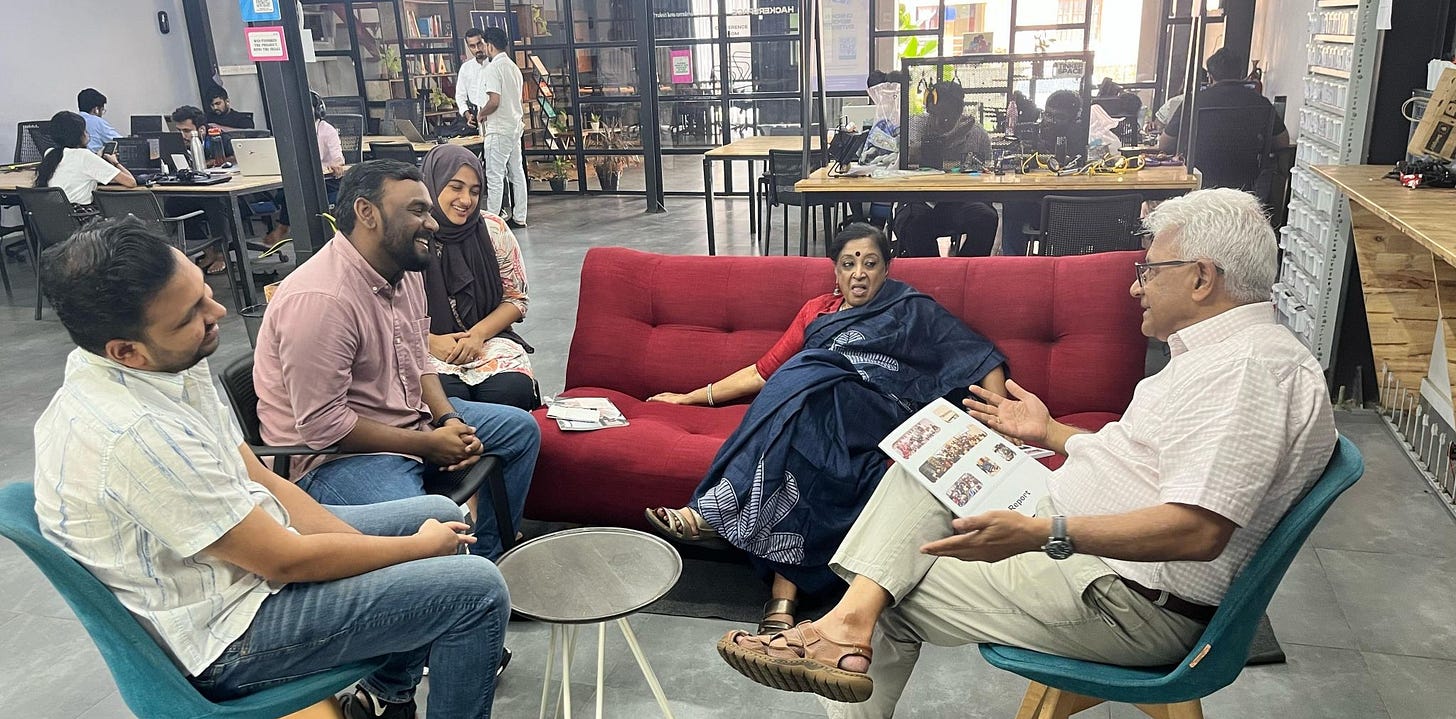📢 Kolaambi #7: Taste Is the New Tech, Apparently
A monthly newsletter with all things tech, people and communities.
Fellow makers 👋
I’m Abid—another curious mind like many of you. From now on, with help from a few friends, I’ll write to you once a month with a handful of links I found interesting, some thoughts on the changes happening around us, and a couple of courses I’ve loved (or heard great things about).
Earlier, KJ and I had started Kolaambi—some of you might remember the first 6 editions. We didn’t keep up with it as we promised, and yep, that’s on us. But we’re back now, and hoping to stay. Again.
I want this to be a shared notebook. A place to explore tech, learning, design, and a little bit of everything else. This isn’t a TinkerHub bulletin—it’s a space for us to think, reflect, and discover together.
The biggest challenge of writing this newsletter now is making sure it doesn’t slowly turn into just another AI newsletter. I promise to keep it curious, human, and a little bit of everything. Here we go again →
Ever stumbled upon something that just feels right? A font choice that calms your brain. A piece of music that makes you stop and listen (& maybe Shazam). The layout of a room that feels peaceful for no clear reason. The pacing of a film that flows just right. A flavour in that dish that just hits your soul. You can't explain it, but it clicks. That’s taste.
This edition of Kolaambi is a little love letter to that feeling.
We’re talking about taste—that fuzzy, often underrated skill that’s becoming more important than ever in the age of AI.
One name that always pops into my head when I hear “taste” is of Rick Rubin. Rick who helped shape the sound of Kanye, Metallica, Johnny Cash—and never learned to play an instrument and yet, he has received eight Grammy Awards. In his book The Creative Act, he describes taste not as a skill, but as an awareness. A sensitivity to what resonates.
“Taste is a practice you can develop and strengthen. It's a reflection of who you are.” — Rick Rubin
🎥 Watch him talk about it →
Taste is hard to teach, but I believe it can be built. It begins with paying attention—to what moves you, what moves others, what sparks your curiosity, what feels just right. It’s in the playlists you craft, the posts you save, the spaces you design (basically, your instagram discover page :p). It’s the quiet act of noticing. And in a world where AI might do most of the building, maybe our job is to keep noticing.
📓 A Little Practice for Taste
Keep a “noticing journal” – For one week, jot down anything that catches your attention—a UI flow, a café logo, a line in a movie, a song you Shazam’d, or even a random street poster. Then pause and ask: why did this stand out?. Taste begins where curiosity lingers.
Taste is the bread and butter for designers. When we design with care, we’re not just solving problems—we’re shaping how people feel. And in the era of AI, that evoking emotion might just be our most powerful tool.
📚 What to Read
As AI seeps deeper into our tools and workflows, what does it mean for makers (not just designers)? Design is no longer just about usability. It's about trust, ambiguity, and how humans collaborate with machines. And it’s just getting started.
The UX of AI — Nanyu breaks down how designing for AI products differs from traditional interfaces. Think fuzzy inputs, unpredictable outputs, and systems that learn over time. This is the new playground.
Design for the AI Age – Linear — A beautiful read on how to think beyond prompts and into building tools that feel like magic. Linear’s approach to integrating AI feels like what the future might just look like.
🎓 What to Learn
1. Getting started with AI (the right way)
Everyone’s asking: how do I start learning AI? The FOMO is real. The good news? You don’t need to dive into math-heavy papers (for now). Andrew Ng, one of the best educators out there, has a great beginner-friendly course. You can audit it for free, or pay if you’d like a certificate.
🎓 Generative AI for Everyone →
2. Prompting without the hype
I’m not really a fan of “prompt engineering” as a career skill. But I did find this guide from Google super useful for understanding how to actually write better prompts when working with Gemini or similar tools. Less fluff, more practical stuff.
📄 Gemini Prompting Guide 101 →
🎬 What to Watch
1. Harish Shivaramakrishnan from CRED (for mallus — lead singer of Agam) shares what taste means to him—how it’s about restraint, choices, and the emotions behind the craft. Especially relevant if you’re building anything at the intersection of design and tech.
🎙️ Watch the interview →
2. A story close to home
Did you watch the mini-documentary on TinkerHub yet? It’s a beautiful reminder of where we came from and why it still matters. Whether you're new to the community or have been around since the early days, this one's worth your time.
🎥 Watch here →
3. Product thinking, minus the fluff
I’ve always had mixed feelings about the title and the role of a “Product Manager" (I worked as Product Director / Product head for a decade. Irony.) But if you're into building tech or even just curious about how ideas turn into real things, this conversation is gold. It’s honest, smart, and super insightful.
🎧 Listen to the podcast →
🧪 What’s Brewing at TinkerHub
1. One of the key challenges we’ve always had at TinkerHub was storytelling. But over the last few months, we’ve been quietly working on it. From learning to making to community building, our YouTube channel now tells some of those stories. Take a peek and find your flavor:
🎥 TinkerHub YouTube Channel →
2. Mr. Balagopal Chandrasekhar—former Chairman of Federal Bank, a pioneer in India's biomedical manufacturing, and someone who’s spent decades enabling change—visited our little warehouse-turned-maker haven near CUSAT: TinkerSpace. His words stayed with us: “I’ve visited many incubators and maker spaces, but this one had openness and energy. We need more such places.”
📝 Read his reflection on LinkedIn →
3. Hello, Kasaragod! Did you know you now have a maker space in your town? We’re thrilled to be part of the new journey at OpenMind by Kasaracode—a fresh, vibrant space for creators and curious minds.
📸 See what’s happening →
Opportunities and upcoming learning activities from TinkerHub are moved to the Hub of TinkerHub app. Feel free to check out it in the app. (The app story is something I want to write about in a coming newsletter.)
If this made you pause, smile, or think—mark it as important (email alogrithms is bit wired) or share it with a friend. If not, no hard feelings—just hit unsubscribe. We’ll still be friends :)
That’s a wrap! Don’t let the exam blues get to you. Good luck to everyone sitting for exams this month. A maker with a great CGPA is 🔥.
Feel free to comment if you want to show some love, mark your dissent, add something I missed, or just say hi. Always happy to hear from you.










Thanks for reading! :)
[Note to self] Here’s what we’ll be adding in the next editions:
+ Best projects built by the community and indie makers is something we can add.
+ Maybe, reduce content on “Watch” and “Learn” to ensure we’re using the real estate well.
+ @reema suggested keeping posts shorter, so I’ll do that.
+ Should we keep a space for updates around AI? How can I see Seedream 3.0 without sharing it with the community, അല്ലേ?
+ What’s the best time of the month to publish? Also, what’s the best time?
+ How can we ensure that people are unsubscribing on time?
+ Kailash showed us what we can achieve with Listmonk. Should we eventually move to a self-hosted mailing list?
Two good reads shared by Lazim around Taste & Design:
https://www.are.na/editorial/notes-on-taste
https://www.terrain.com/design-literacy